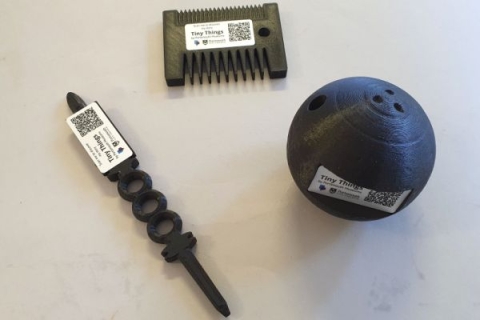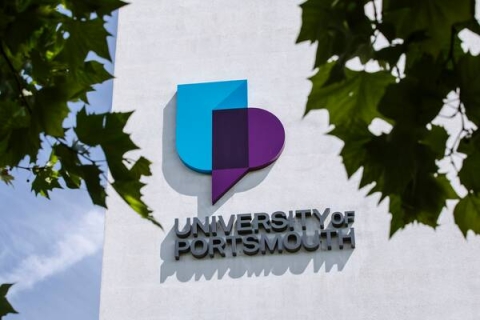

A new interactive museum experience will let people explore the history of the oldest part of Portsmouth using the latest technology
28 October 2021
3 min read
University of Portsmouth student, Felicity Bessant has produced the models for a new interactive museum experience that will let people explore the history of the oldest part of Portsmouth using the latest technology.
The Tiny Things project will see nine small replicas of museum exhibits dotted around Old Portsmouth for residents and visitors to discover.
The tiny creations are made using 3D printers and will be found near to the original homes of the historic items they are based on and will be accompanied by a QR code, which can be scanned to find out more about it.
Aiming to make museum exhibits more accessible to the public in different ways the Portsmouth City Council project is in partnership with the University of Portsmouth's School of Creative Technologies where MSc student Felicity Bessant produced the models.
Each model has its own unique QR code that can be scanned using a mobile phone and will let you see the original artefact they are based on, as well as their stories and significance in Portsmouth.
Felicity Bessant, School of Creative Technologies MSc student
Each model was digitally designed by Felicity either by freehand or by laser scanning and then 3D printed in PLA plastic.
Many of the artefacts that were chosen are tiny in size, so the printed models were increased in size to allow them to be seen more easily, varying from 5 to 15 cm. A few of the other artefacts, which were much larger, were scaled down so the printed models would also fit that range.
Felicity said: "I am excited for people to go out and search for the models in Old Portsmouth, it could be considered as a treasure hunt. Hopefully it encourages people to be curious, and to go out and look for all of the models that have been made. There are nine of them that can be found in eight separate locations (one location has two similar models in the same space). Each model has its own unique QR code that can be scanned using a mobile phone and will let you see the original artefact they are based on, as well as their stories and significance in Portsmouth."

The Tiny Things project will see nine small replicas of museum exhibits dotted around Old Portsmouth for residents and visitors to discover
Dr Brett Stevens, Director of Postgraduate Programmes for the School of Creative Technologies said: "To position a physical object as a link to its history online seems simple, but it involved a lot of thought, experimentation and development. They must work in all weathers and use techniques that are affordable and scalable. Felicity's solution is an elegant example of using appropriate technology to solve real world problems, which is the focus for our postgraduate courses."
If the Old Portsmouth items prove popular the scheme could be expanded to see replicas popping up across the city to spread word of the history in some of the everyday items from Portsmouth's past.
Cllr Ben Dowling, the council's Cabinet Member for Culture, Leisure and Economic Development, said: "We're always looking for new ways to bring museum exhibits to life and get them in front of wider audiences and this is an ideal way to do just that. I hope this project really captures people's imaginations and we can help people learn more about the city's past in a fun interactive way."
For more information visit https://portsmouthmuseum.co.uk/get-involved/tiny-things/
